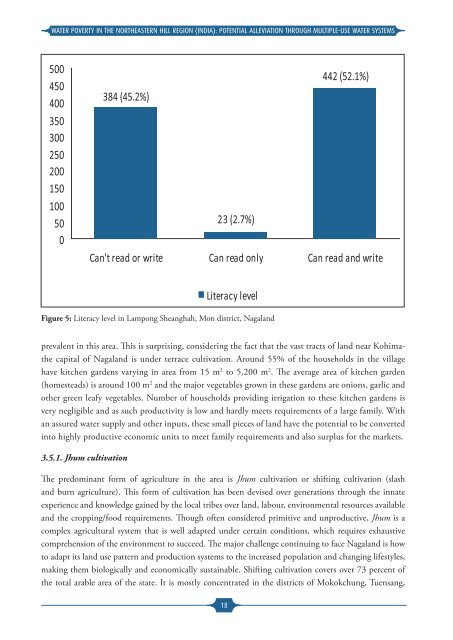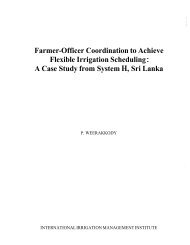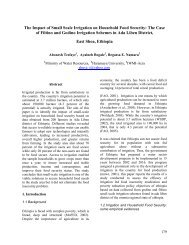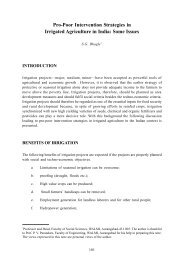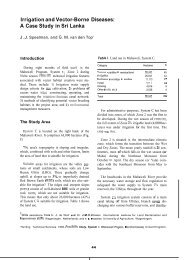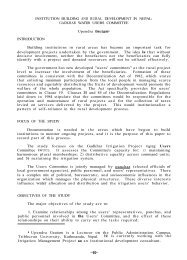WATER POVERTY IN THE NORTHEASTERN HILL REGION (INDIA)
WATER POVERTY IN THE NORTHEASTERN HILL REGION (INDIA)
WATER POVERTY IN THE NORTHEASTERN HILL REGION (INDIA)
Create successful ePaper yourself
Turn your PDF publications into a flip-book with our unique Google optimized e-Paper software.
<strong>WATER</strong> <strong>POVERTY</strong> <strong>IN</strong> <strong>THE</strong> NOR<strong>THE</strong>ASTERN <strong>HILL</strong> <strong>REGION</strong> (<strong>IN</strong>DIA): POTENTIAL ALLEVIATION THROUGH MULTIPLE-USE <strong>WATER</strong> SYSTEMS500450400350300250200150100500442 (52.1%)384 (45.2%)23 (2.7%)Can't read or write Can read only Can read and writeLiteracy levelFigure 5: Literacy level in Lampong Sheanghah, Mon district, Nagalandprevalent in this area. This is surprising, considering the fact that the vast tracts of land near Kohimathecapital of Nagaland is under terrace cultivation. Around 55% of the households in the villagehave kitchen gardens varying in area from 15 m 2 to 5,200 m 2 . The average area of kitchen garden(homesteads) is around 100 m 2 and the major vegetables grown in these gardens are onions, garlic andother green leafy vegetables. Number of households providing irrigation to these kitchen gardens isvery negligible and as such productivity is low and hardly meets requirements of a large family. Withan assured water supply and other inputs, these small pieces of land have the potential to be convertedinto highly productive economic units to meet family requirements and also surplus for the markets.3.5.1. Jhum cultivationThe predominant form of agriculture in the area is Jhum cultivation or shifting cultivation (slashand burn agriculture). This form of cultivation has been devised over generations through the innateexperience and knowledge gained by the local tribes over land, labour, environmental resources availableand the cropping/food requirements. Though often considered primitive and unproductive, Jhum is acomplex agricultural system that is well adapted under certain conditions, which requires exhaustivecomprehension of the environment to succeed. The major challenge continuing to face Nagaland is howto adapt its land use pattern and production systems to the increased population and changing lifestyles,making them biologically and economically sustainable. Shifting cultivation covers over 73 percent ofthe total arable area of the state. It is mostly concentrated in the districts of Mokokchung, Tuensang,18


